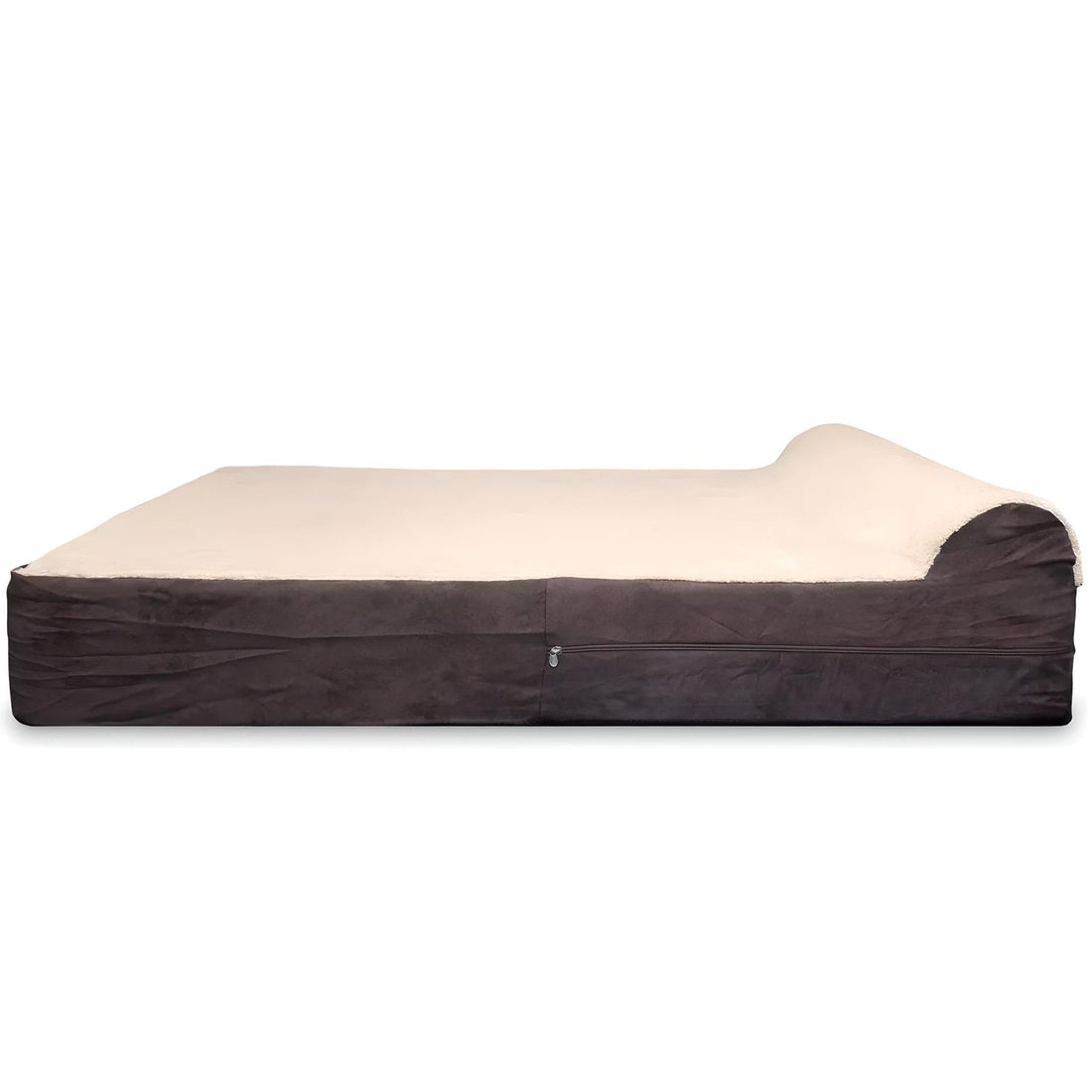Choosing the right orthopedic dog bed is essential for your pet’s health and comfort. Not all orthopedic beds provide the same level of support, and understanding the differences between memory foam and regular orthopedic beds can help you make an informed decision. Factors such as material, durability, comfort, and health benefits play a key role in selecting the best bed for your furry friend. In this guide, we compare memory foam vs. orthopedic dog beds to help you determine which one suits your dog's needs best.
What is a Memory Foam Dog Bed?
How Memory Foam Works
Memory foam dog beds are designed to provide superior pressure relief by contouring to a dog’s body shape. The high-density foam dog beds evenly distribute weight, reducing stress on joints and muscles. This is especially beneficial for older dogs and those with arthritis or mobility issues.
Key Benefits of Memory Foam Beds
- Offers optimal joint and spine support.
- Reduces pain from arthritis, hip dysplasia, and joint issues.
- Retains warmth, making it ideal for cold weather.
- Provides long-lasting durability compared to traditional foam.
Potential Downsides of Memory Foam Beds
- Can retain heat, making it less suitable for warmer climates.
- Generally more expensive than regular orthopedic dog beds.
What is a Regular Orthopedic Dog Bed?
What Defines an "Orthopedic" Dog Bed?
Not all beds labeled orthopedic dog beds contain memory foam. Many use egg-crate foam, polyfiber, or cotton padding, which provide mild support but lack the body-contouring properties of true memory foam dog beds.
Key Benefits of Regular Orthopedic Beds
- More affordable than memory foam options.
- Lightweight and easier to move and clean.
- Suitable for dogs that do not require intense joint support.
Potential Downsides of Regular Orthopedic Beds
- Limited temperature regulation – Some orthopedic beds may not retain warmth like memory foam, which can be a drawback for pets that need extra coziness in colder climates.
- Less structured support for long-term use – Some regular orthopedic beds use materials that offer initial comfort but may not provide the same structured support as memory foam over time, especially for dogs with chronic pain or mobility concerns.
| Feature | Regular Orthopedic Beds | Memory Foam Beds |
|---|---|---|
| Support Level | Moderate – general support | High – conforms to body |
| Durability | Can flatten over time | Long-lasting |
| Best for | Young dogs, mild discomfort | Dog beds for arthritis, senior dogs, pain relief |
| Heat Retention | Cooler | Warmer |
| Cost | Budget-friendly | Higher price range |
Which One is Best for Your Dog?
- For dogs with arthritis or chronic pain → Memory Foam Dog Beds.
- For healthy adult dogs needing mild support → Regular Orthopedic Beds.
Customer Experiences
Many dog owners have reported noticeable improvements in their pet’s mobility and sleep quality after switching to a memory foam dog bed. Common feedback includes reduced stiffness in senior dogs and better overall rest.
Selecting the right orthopedic dog bed for your dog depends on their specific needs. Memory foam dog beds offer the highest level of support for senior pets and dogs with joint pain, while regular orthopedic beds provide a budget-friendly option for healthy adult dogs. Consider your pet’s comfort, health, and sleeping habits before making a decision.
Browse the best orthopedic dog beds today to give your furry friend the comfort they deserve!



